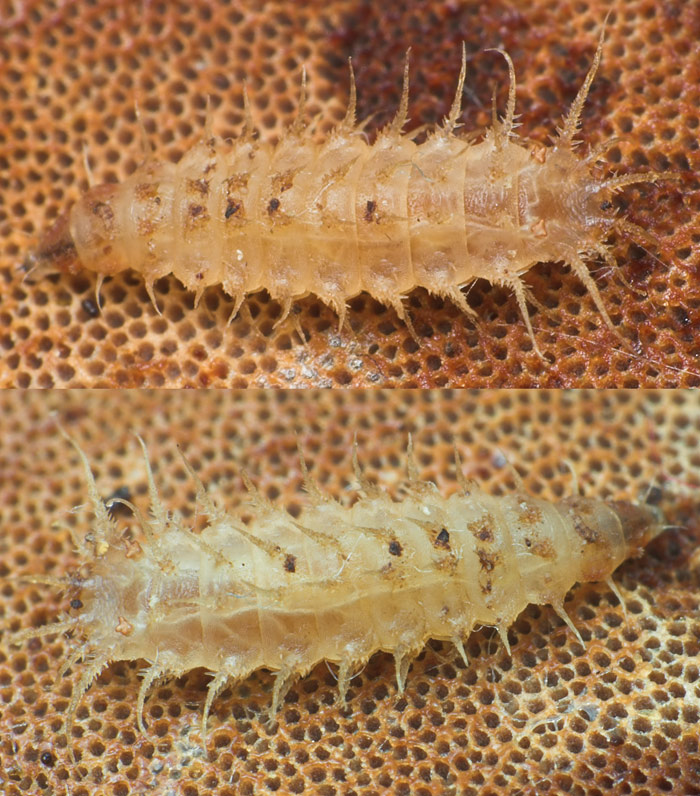Diptera.info :: Identification queries :: Diptera (eggs, larvae, pupae)
Who is here? 1 guest(s)
|
Another larva on Ganoderma
|
|
| Dmitry Gavryushin |
Posted on 30-09-2007 19:58
|
|
Member Location: Moscow region, Russia Posts: 3303 Joined: 17.10.05 |
The same bracket fungus with galls of Agathomyia wankowiczii. Size around 5 mm.
Dmitry Gavryushin attached the following image:  [180.05Kb] |
|
|
|
| Stephane Lebrun |
Posted on 30-09-2007 21:11
|
|
Member Location: Le Havre, France Posts: 8248 Joined: 03.03.07 |
Looks like Fannia larva. Many species feed on fungi, but I don't know in Ganoderma lipsiense.
Stephane. |
|
|
|
| Dmitry Gavryushin |
Posted on 01-10-2007 17:42
|
|
Member Location: Moscow region, Russia Posts: 3303 Joined: 17.10.05 |
Many thanks Stephane - I've also come to Fannia sp. and found a good match (Krivosheina, Zaitsev, and Yakovlev, 1986, p. 88, fig. 25). |
|
|
|
| jorgemotalmeida |
Posted on 03-10-2007 00:25
|
|
Member Location: Viseu - PORTUGAL Posts: 9295 Joined: 05.06.06 |
I'd say Fannia scalaris. |
| Stephane Lebrun |
Posted on 09-10-2007 23:03
|
|
Member Location: Le Havre, France Posts: 8248 Joined: 03.03.07 |
F. scalaris is not a bad guess at all. With Rozkosny, Gregor and Pont key, I arrive either to F.scalaris or F. coracina. I cannot decide between the two criteria mentioned in the last couplet (size ans extent of the projections covering the processes of last abdominal segment).
Stephane. |
|
|
|
| jorgemotalmeida |
Posted on 06-01-2008 04:01
|
|
Member Location: Viseu - PORTUGAL Posts: 9295 Joined: 05.06.06 |
Fannia coracina. It is clear that projections on processes ends before the half basal, therefore Fannia coracina. Did you rear this Dima? Edited by jorgemotalmeida on 06-01-2008 15:39 |
| Dmitry Gavryushin |
Posted on 06-01-2008 20:26
|
|
Member Location: Moscow region, Russia Posts: 3303 Joined: 17.10.05 |
Nope  . . |
|
|
|
| jorgemotalmeida |
Posted on 06-01-2008 21:08
|
|
Member Location: Viseu - PORTUGAL Posts: 9295 Joined: 05.06.06 |
I suggest that in next time you try to rear this Fanniids larvae.  It would be very nice to see one photo of Fannia vespertilionis. It has amazing dorsal processes in the last segments.  |
| Jump to Forum: |















